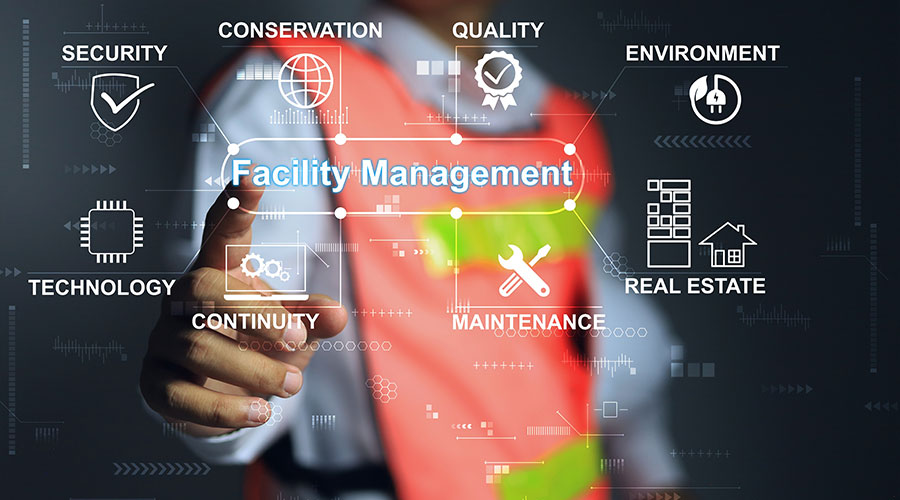Embracing a Life-Cycle Cost Analysis
OTHER PARTS OF THIS ARTICLEPt. 1: This Page
Most maintenance and engineering managers have heard the statement, "Pay me now, or pay me later." If you've heard it too often, that's probably not good. But what is the proper response to the statement? Should managers making large purchases or expenditures focus more on initial costs or long-term costs? What are the benefits of each approach?
Unfortunately, when it comes to the procurement philosophies and practices in institutional and commercial facilities, managers traditionally have focused on initial costs. And that approach is becoming more commonplace these days. Because of the recent economic problems nationwide, some organizations have gone back to doing what managers know all too well as deferred maintenance. Because of tight budgets, organizations are putting off repairs, replacements, and upgrades until a later date — all allegedly in the name of saving money. Some organizations' strategy is to buy products with the lowest upfront costs in the hopes of controlling overall spending.
Here's the problem: This strategy is shortsighted, not visionary. In many cases, the statement should be: Pay me some now, or pay me a lot more later.
The Long-Term View
Managers looking to break away from this shortsighted strategy instead can explore and embrace the concept of life-cycle-cost analysis (LCCA). This method assesses the total cost of ownership for a piece of equipment, a building addition, a renovation, and similar expenditures that managers must make.
LCCA is defined as a method for evaluating all relevant costs over the performance life of a project, product or facility. This method takes into account:
- first costs, including capital-investment, purchase, and installation costs
- future costs, including energy, operating, maintenance, capital-replacement, and financing costs
- resale, salvage, or disposal costs over the life of the project, product, or facility.
The idea behind calculating LCCA is to maximize the costs by comparing them to alternative choices that are similar, yet different in cost structures. For example, LCCA can help managers determine the cost-effectiveness of purchasing a high-efficiency air handling unit or an economy version.
Only 15 percent of the total cost of ownership for a product is its procurement or acquisition, according to research. That means the bulk of the life-cycle costs comes after the purchase — 45 percent for energy-related costs, 35 percent maintenance costs, and the remaining 5 percent for what is classified as other. Why is it that so few organizations seem to understand and LCCA or apply it when 70 percent of an asset's costs are wrapped up in energy and maintenance expenses?
Why Managers Don't Use LCCA
When managers were asked why they don't use LCCA, two responses dominated: It's too complicated, and we're not exactly sure how to calculate it.
Simply put, LCCA is used appropriately to select among alternatives that would yield the same level of performance or benefits in normal operations. Managers can apply the LCCA method to many different kinds of decisions on both large and small scales when the focus is on determining the lowest-cost alternative for achieving a given level of performance.
For example, a manager can use it to compare the costs of two building designs — for example, to determine the expected savings of retrofitting a building or constructing a new one, or determining the lowest cost of ownership for a new or upgraded HVAC system.
Managers will need the following information in order to conduct an LCCA:
- the initial cost
- the expected life, usually expressed in years
- expected average yearly costs for maintenance, operation and repair
- maintenance and repair costs that occur only every few years, averaged over the time between occurrences
- costs for operation, including fuel, electricity, and water use, as well as any ongoing costs
- salvage and other residual value that the system will deliver.
Steps To Avoid Mistakes
In most cases, an LCCA appears fairly straightforward. But dig deeper into the details, you'll start to see the important differences between a traditional approach to major expenditures and an LCCA.
Take the initial cost, for instance. Managers often overlook key details of the true cost of acquisition — for example, transportation costs for the equipment, installation expenses, and travel costs for the installation technicians. If the expenditure is a new piece of equipment, how do we calculate its average annual maintenance costs? Do the costs rise with age? How do you account for energy prices in the future? How do you calculate salvage values? What is the item's net present value (NPV)?
Don't fret. Resources are available that can help walk you through all of this. The organization's procurement and finance departments, original equipment manufacturers, and contractors all can assist in determining estimates expenses and costs. The Internet is full of information that can help, as well.
While doing some research, I came across an excellent web site for managers interested in learning about LCCA. It was one of the best sites I've come across that explains LCCA in simple terms with wonderful examples: www.green.ca.gov/LCCA/default.htm
The site offers a sample LCCA worksheet, which is not very complicated, and as you explore the web site, it will walk you through the process of determining LCCA on your next project.
Perhaps most importantly, LCCA can help managers make smart specification and purchasing decisions that enable their organizations to avoid paying a lot more later.
Agree? Disagree? Have something to say?
We want to hear from you. Visit myfacilitiesnet.com/AndyGager, and start a conversation.
Andrew Gager, CPIM, CMRP, is a principal consultant with Life Cycle Engineering. He has more than 28 years of experience, ranging from warehousing operations to plant manager. Specializing in materials management, change management, and optimizing operations, Gager has led multiple improvement initiatives that include Kaizen events, strategic-sourcing programs, and successful reconfiguration of warehousing operations.
Related Topics:











